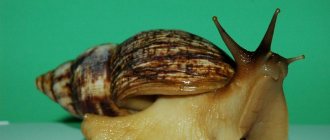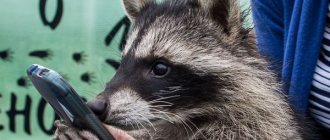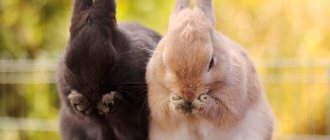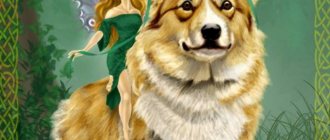Description of the appearance and habits of the animal
The jerboa is a mammal belonging to the order of rodents. Outwardly, it resembles a kangaroo, however, it is much more modest in size. This comparison is applicable due to the long hind legs of the animal, thanks to which it moves in relatively large jumps. The rodent's front legs are much smaller. The animal's head is large relative to its small body, ending in a very long tail with a funny tassel. The jerboa's fur is very pleasant to the touch and is most often colored golden-sand or yellow-gray, the belly is slightly lighter.
Depending on the species, the body weight of the animal can be up to 300 grams, and the length including the tail usually does not exceed 30 cm. This animal is very demanding in terms of physical activity, which must be taken into account when purchasing. In addition, his usual way of life is nocturnal . Not all people know this feature. Therefore, you should be prepared for the fact that he will most often hide during the day and create noise at night.
Jerboas are solitary creatures by nature, and attempts to keep more than one individual will most likely end in them being aggressive towards each other and frequent fights. These kids are very jealous of protecting their territory. They contact only during the breeding season.
Lifestyle
Large eyes and the size of the ears indicate that jerboas are nocturnal inhabitants
. They leave their burrows about half an hour after sunset, and search for food all night. To do this, they can walk up to five kilometers. Before dawn, the animal returns to its hole, where it sleeps all day.
Jerboas have four types of burrows:
- The permanent burrow is equipped with several entrances. The main entrance has a slope, and the rest approach almost to the surface and are spare. The main passage leads to the living chamber, in which the animal, using crushed blades of grass, makes a “bed” for itself.
- Temporary daytime burrows. The length of such dwellings is from 20 to 50 cm. To maintain humidity and coolness in them, the entrance is sealed with a sand or earthen plug.
- Rescue holes. These are simple passages in which the animals hide. Their depth is from 10 to 20 cm.
- Wintering burrows. Such dwellings have a wintering chamber and underground storage rooms at a depth of 1.5-2.5 meters.
During the winter season, many types of jerboas hibernate
. This happens around October and lasts for four months. If warming suddenly occurs in winter, the animals may wake up for a short time.
Conditions of detention
Since it is still a wild animal, the jerboa at home is very demanding in terms of arranging its habitat. Due to its energy, the animal’s cage must be rather large; a small enclosure is most suitable for it. The height of the home should be at least 50 cm, because the animal moves by jumping.
In order for the baby not to experience stress and easily adapt to the content, it is advised to recreate living conditions as close to natural as possible:
- The best option as a filler is regular sand. If desired, you can use corn filler instead, but sawdust is undesirable. From them, the rodent runs the risk of developing an allergic reaction.
- Jerboas live in burrows, so it is necessary to give them the opportunity to acquire shelter in an enclosure. For this, turf is suitable, in which the baby can dig a tunnel on his own, or offer him a clay pot that allows him to replace the hole.
- In the landscape surrounding the animal, water is not necessary; they are used to taking sand baths, but the rodent will accept plant oases with pleasure. Small twigs and leaves scattered on the sand will occupy the jerboa with its usual worries - with their help the animal will equip its nest.
You can add a couple of stones as a decorative element. The only thing that needs to be taken into account when decorating your home is that the use of plastic items is prohibited . The jerboa will definitely chew this material, so it is advisable to use natural ingredients.
Of course, a cage cannot be complete without a drinking bowl and a bowl for treats, which should be quite heavy so that the pet does not tip it over. It is advisable to refresh drinking water daily. By nature, the animals are quite clean, so changing the bedding 1-2 times a week will be enough to maintain perfect cleanliness in the enclosure.
WHAT TO FEED A JERBAE?
The animal's cage must have a food bowl and drinking bowl. Fruits, vegetables and grains are suitable food for the animal. Jerboas love watermelon, sunflower seeds and hay. The animal will not refuse other treats:
- Pears and apples
- Potato
- Carrot
- Beet
- Herbs
If you have the opportunity, offer the animal roots of plants and tree branches. Also, jerboas must be given insects, from grasshoppers and butterflies to mealworms, which will help maintain a normal body temperature, as well as a high level of activity. Water and food should be changed every day.
Diet
When purchasing such an exotic animal, the new owner does not always have an idea of what the jerboa eats . In fact, his diet is very varied, and it will not be difficult to choose a nutrition plan for this fidget. He eats both plant and animal foods. So, what to feed the jerboa at home?
- The basis of the diet must be a grain mixture for rodents, which is dominated by wheat, oats, millet and barley. For variety, different seeds are suitable, for example, sunflower and pumpkin.
- Fruits and vegetables must be present in the animal’s diet. Without fear, your baby can be given fresh apples, carrots and cabbage. It is best not to offer exotic fruits.
- Protein foods of animal origin include mealworms, crickets and grasshoppers. It is permissible to add boiled finely chopped meat, low-fat cottage cheese and a boiled egg to the baby’s diet.
It is forbidden to feed your ornamental pet food prepared for humans, because spices, salt and sugar are contraindicated for these animals. Seafood is also not suitable for animals. The food offered to the jerboa should always be fresh.
Reproduction
The mating season for these mammals is quite long. It begins for the most part in April and continues until mid-summer . The female becomes pregnant once a year, but sometimes she can have time to bear offspring twice during this period of time.
Pregnancy lasts about 24-26 days, after which 1 to 8 babies are born. After 45-60 days they become independent enough to leave their parents’ nest and live separately. Puberty occurs at one year of age.
How long jerboas live in the wild is strongly influenced by the presence of a large number of predators who love to hunt these rodents. Most often, for this reason, their lifespan in their natural habitat does not exceed three years. At home, thanks to the absence of enemies and the care of the owner, the pet will live about 4-5 years.
HAMSTER FAMILY
Hamster-like rodents are second only to the mouse family in their numbers and diversity, including about 450 species. Its representatives live throughout the Old and New Worlds; they live in steppes, fields and deserts. There they dig holes for themselves and build their nests. Hamsters are small in size - up to 35 cm long and light in weight (up to 500g).
A special feature of the family is their so-called cheek pouches. They are outgrowths of the walls in the animal’s oral cavity and are capable of greatly expanding. It is amazing how a small rodent weighing 15–20 g is able to fill its cheeks with such an amount of grain that reaches 7–10 g, that is, half its weight. This feature allows rodents to collect about several kilograms of supplies for the winter in their burrow.
The lifespan of a hamster depends on living conditions and diet; they live 2–3 years.
Contact with a person
Although the jerboa is increasingly used as a pet, it is still a wild animal with a high level of caution and a well-developed instinct for self-preservation. Because of this, even if the baby was acquired at a very tender age, there is no guarantee that he will quickly get used to the hands and freely allow himself to be squeezed.
Therefore, a person who decides to have such a pet will have to stock up on a fair amount of patience and carefully accustom the jerboa to his presence. To do this, you need to be in the same room with the rodent as often as possible so that it gradually gets used to the voices of its owners. It will always be given to hands reluctantly; if it is noticeable that the animal is nervous, it is better to release it back into the enclosure to give it time to calm down.
Letting a jerboa out of its cage to run around the apartment is a dubious pleasure. Catching him can be very difficult . In addition, like any other rodent, it can chew any piece of furniture and even wires. Otherwise, this is an interesting and unusual version of a pet, which, thanks to its cute appearance, relatively low price and simple maintenance, is gaining more and more popularity.
Home jerboa











